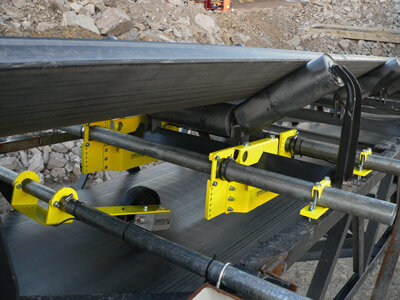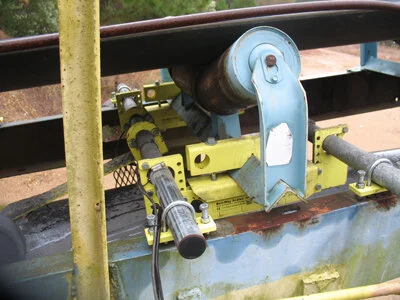Is my belt scale weighing accurately?
We often have customers call regarding their belt scale, and they generally want to know how accurate the scale is. Usually, if they are calling, they don’t think the belt scale is right and they want to see what can be done to get more accurate weight data.
There are a few things to look at when assessing your belt scale.
1. Environment & Scale Condition:
The first thing is the physical environment and the condition of the scale. There should be no build up of material around the belt scale. A lot of time, material will fall off the conveyor belt and get lodged in between the load cell assemblies and the conveyor frame. Also check the wires to make sure that none of them have been pinched, cut, or damaged. In general, the load cell wires terminate inside a junction box and that junction box goes to the scale head (or integrator). Check all the wiring including the wiring that goes from the speed sensor to the integrator. The two types of speed sensors you may have are generally one of the following:
an arm with a wheel that tracks along the return side of the belt
an encoder that is installed on the tail pulley with magnets
2. Scale Installation Location:
If all the wiring seems to be in good shape, you should look at where the scale was installed on the conveyor. You want to make sure and have three to four idlers of distance on either end of the scale. This is to make sure there is no “noise” in the system. Basically, you want the material to be traveling as smooth as possible while it is going across the scale. We’ve seen belt scales installed directly under a load out – that is not going to provide good data. You also want to check if the previously mentioned idlers (three to four before and after the scale) are on the same plane as the scale. You can do this by tying a string on the first idler and then pulling it out covering several in a row. The belt scale should be on the same plane as all the idlers before and after. If it is not, you can use shims to raise and lower idlers as necessary.
3. Belt Scale Parameters
Lastly, you want to check that the parameters were set up in the indicator correctly. A belt scale is a weigh in motion scale and certain variable data (belt length, belt speed, etc.) has to be set up correctly in the integrator in order for the scale to weigh accurately. Belt scales are more complex than typical static scales (think static truck scale) and therefore not all scale technicians are familiar with them. There are several different belt scale manufacturers out there and each one has their own flavor of set up and software.
At the end of the day, the best place to start is to make sure the scale and surrounding area is clean and free of debris. Having a good preventative maintenance plan to prevent a lot of issues that you may encounter with your belt scale.


